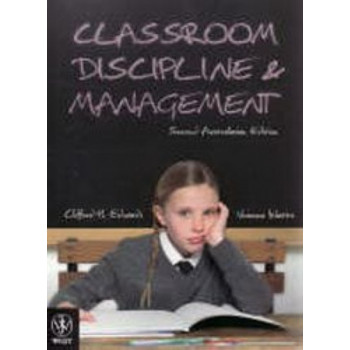Classroom Discipline & Management (Australasian Edition) 2E
- Author: Edwards, C.H. & Watts, V.
- ISBN: 9780470814499
- Availability:
$NZ 195.99
$NZ 79.99
Ex Tax: $NZ 79.99
Classroom discipline remains the single most common problem educators face in their day-to-day teaching. Because discipline problems are so prevalent and difficult to solve, many educators and specialists in related fields have attempted to provide help for teachers. Their suggestions come from a variety of perspectives and are based on different assumptions about the purposes of schooling and the capabilities of students. Teachers often fail to scrutinise the assumptions on which these discipline approaches are based or to measure them against their own values and educational philosophy. This text is designed to help teachers explore various approaches to classroom discipline along with their own personal philosophy. The text emphasizes informed decision-making. The teacher must have an understanding of the assumptions behind a disciplinary approach, as well as the theory and practical applications of that approach. NEW TO THIS EDITION * New! Coverage of Linda Albert's Cooperative Discipline model.Linda Albert grounds her model firmly in the philosophy and psychology of Alfred Adler and Rudolf Dreikurs, synthesizes it with the theories of William Glasser, Albert Ellis and Eric Berne, and then includes strategies and ideas from her own experience as a classroom teacher.* New Chapter! Special considerations in relation to indigenous students and those from other cultures and students with disabilities. * New supplement! A test bank is now available to lecturers, providing multiple-choice and essay questions categorised by page number and type of question. Ideal for class tests and tutorial exercises. FEATURES * Includes chapters outlining discipline models used in schools throughout Australasia, including: * Ed Ford's responsible thinking process model * Bill Rogers's positive behaviour leadership model * Patrick Connor's pain model * While other textbooks provide an overview of a range of behaviour management models, this book is the only one to place an emphasis on the pedagogy of developing one's own behaviour management model. Chapters 11 (Developing your own discipline model) and 12 (Developing your own classroom organisation skills) are key in this regard.* The Counterpoint feature presents a different point of view to the one taken in the chapter and asks students to question the theory in the text, encouraging the development of critical thinking skills.* All chapters in the discipline models unit include a Theoretical applications feature, which illustrates how the particular discipline model can be applied to a generic discipline problem. * End of chapter case studies focus on an Australasian school or classroom discipline program, applying the content of the text to real-world examples. * Chapter opening pages include chapter objectives and assumptions while end of chapter material include a comprehensive summary, questions for discussion and debate, and a 'develop your own model' feature.
"
Contents: Unit 1: Problems and issues in discipline Chapter 1: Discipline problems and their causes Chapter 2: Making decisions about discipline Unit 2: Discipline models Chapter 3: The Behaviour modification model: B. F. Skinner Chapter 4: Assertive discipline model: Lee & Marlene Canter Chapter 5: Democratic discipline model: Rudolf Dreikurs Chapter 6: Choice theory, reality therapy and lead management model: William Glasser Chapter 7: The teacher effectiveness training model: Thomas Gordon Chapter 8: Responsible thinking process model: Ed Ford Chapter 9: Positive Behaviour Leadership model: Bill Rogers Chapter 10: The Pain model: Patrick Connor Unit 3: Taking responsibility for discipline Chapter 11: Developing your personal discipline model Chapter 12: Developing your Classroom Organisation Skills Chapter 13: Special Considerations in Classroom Discipline

